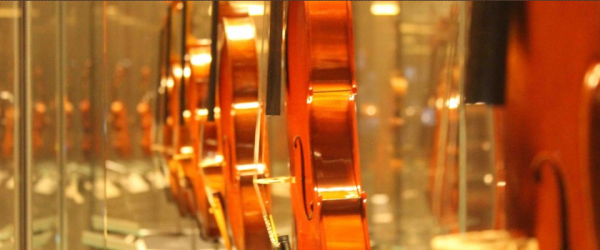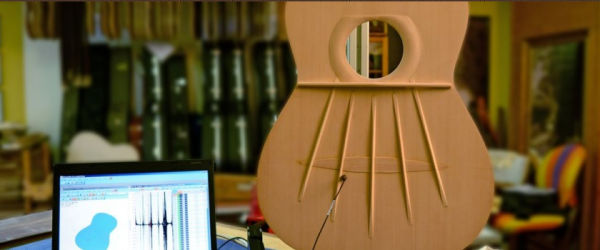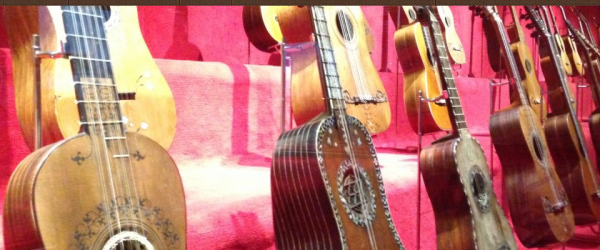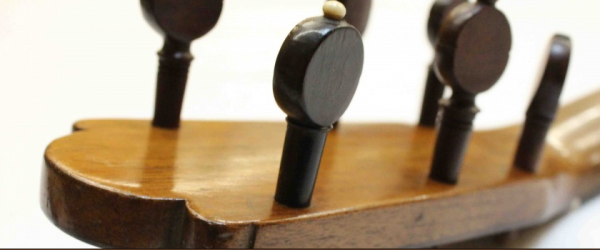WoodMusICK – WOODen MUSical Instrument Conservation and Knowledge
About
 WoodMusICK – WOODen MUSical Instrument Conservation and Knowledge aims to combine forces and to foster research on wooden musical instruments in order to preserve and develop the dissemination of knowledge on musical instruments in Europe through inter disciplinary research. This program involves curators and conservators on the one side, wood scientists, chemists and acousticians on the other side, and finally, researchers in organology and making of instruments.
WoodMusICK – WOODen MUSical Instrument Conservation and Knowledge aims to combine forces and to foster research on wooden musical instruments in order to preserve and develop the dissemination of knowledge on musical instruments in Europe through inter disciplinary research. This program involves curators and conservators on the one side, wood scientists, chemists and acousticians on the other side, and finally, researchers in organology and making of instruments.
As part of the CIMCIM (International Committee of Musical Instrument Museums and Collections) network, working with some members of the former WoodCultHer COST and with makers, the project will integrate study, conservation and preservation works on musical instruments in heritage, and will allow the different European teams working on wood to participate in research projects on musical instruments. The collaboration will help to develop cooperative programs on specific projects about the study and identification of artefacts and about the conservation of musical instruments.
The main objective of this COST Action was improve the conservation of our wooden musical instruments heritage by increasing interaction and synergy between wood scientists and other professionals (including instrument makers) applying wood science, curator, organologists and makers towards the study, conservation and restoration of wooden instrument collections of artistic or historic interest, and to offer a novel and reliable, independent and global knowledge on these collections.
The secondary objectives were identified as follows:
- The development of tools for the CH authorities, for the setting of the uniform cultural values (historical, aesthetical, acoustical, mechanical etc.) evaluations to define the object status;
- To identify and to gather the community of end users in addition to the CH authorities (curators), such as makers associations, learned societies (musical instruments, organology, acoustics, etc.);
- To put into evidence how the modern scientific knowledge on wood may contribute to diagnosis and conservation of wooden musical heritage;
- To point out how the history of techniques may contribute to the understanding of the present state of this heritage;
- To take into account the specific context of cultural heritage object to improve characterization techniques;
- To favour meeting and interaction at both, scientific and practical level, of researchers in the field of wood and mechanics, specialists in conservation of wooden instruments and instrument makers which might successfully contribute to the history, diagnosis, restoration and conservation of wooden instruments;
- To promote the diffusion of knowledge to the public thanks to the development of pedagogical tools;
- To foster and stimulate the making of fac-simile objects thanks to the exchange with the makers.
General background
Like most art objects related to intangible heritage, wooden musical instruments transcend their figure to become the cultural symbols of a period, of a place or of a group of persons. They assume a fundamental importance such as technological advances, idols rituals, outer sign of power and incarnations of the spirits or media rites of passage. Wooden musical instrument could be considered as a high-tech application of wood product since they need many competences to be developed. Producing sound, they become also the oral symbols of extra-musical concepts aiming to communicate inexpressible ideas in a different way: the music.
Today, it is clear that the study of music includes a large number of research fields (composition, musical practice, musical history, musical perception, musical therapy, etc) while the „employed“ musical instrument has still been the object of little research. However when the musical instrument joins a cultural heritage collection, it puts in evidence one or more cultural intrinsic values such as:
- Historical: musical instrument as a bearer of information (know-how, musical context);
- Cultural: musical instrument as a witness of musical traditions;
- History of techniques: musical instruments have been the state of the art of technologies;
- Aesthetic: musical instruments as the subject of handsome materials selection;
- Acoustical: musical instruments as sound producer;
- Mechanical: -maybe less known- the musical instrument as an engineering object (often very small amount of material used to support strong stresses).
This, however, implies studies and changes in the criteria that attribute value and interest to the instrument: its historic role and connections, its rarity, its peculiarity of shape and material may become more relevant than the quality and power of its sound or its usability for concert repertoire. In Europe, it is very difficult to evaluate the numbers of items kept in the museums, but an approximation could be made: more than 100 000 instruments belong to more than 30 public collections. The musical instruments heritage is then the perfect object to be studied under the multidisciplinary approach.
The question of studying and preserving wooden musical instruments has been dealt with by several museums and organisations throughout the world. But up to now, these instruments are investigated almost always at a unique point of view:
- The conservation point of view, thanks to the CIMCIM (one of 25 international committees of ICOM). It aims to promote professional standards in the conservation of musical instruments in museums and collections).
- Art and humanities science approach thanks to the MIMO project museums came together to create a single online access point to their collections.
- Making point of view. Professional associations hold regular meetings to exchange their know-hows about a living activity).
- Acoustics approach. Society meetings are organised and some of which are dedicated to musical acoustics, and sometimes trying to make a link to the making process.
- Wood science point of view. European spruce „resonance wood“ has attracted numerous studies, but still little has been done about the link to historical and cultural aspects, information is often missing complex behaviour including aging, and other wood species used in musical instruments.
However COST Action IE0601 has clearly evidenced the importance of a multidisciplinary approach to the conservation of the wooden cultural heritage. Importance that has been also highlighted in the final remarks of the Cost Strategic Workshop „The Safeguard Of Cultural Heritage“, held in Florence in 2011, that call for a closer cooperation among the human dimension, the societal function and the science and technologies in order to establish a proper and effective conservation of Cultural Heritage (CH). It means that for achieving the aim of preserving wooden musical instruments, museum professionals (curatos and conservators), specialists of musical instruments (organologists, historians of techniques, makers) and scientists have to work together.
Member Countries
Austria, Belgium, Bulgaria, Czech Republic, Denmark, Finland, France, Germany, Greece, Hungary, Iceland, Ireland, Israel, Italy, Netherlands, Norway, Poland, Portugal, Romania, Serbia, Slovenia, Spain, Sweden, Switzerland and United Kingdom. International Partner Countries: Tsukuba University (Japan).









